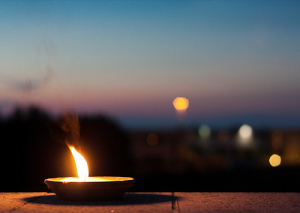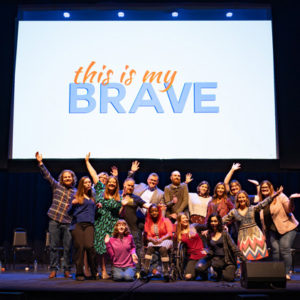Let’s Shine a Light on the Darkness of Mental Illness
 Photo Credit: i k o via Compfight cc
Photo Credit: i k o via Compfight cc
The photo of the young girl – waist length hair, middle part, full smile, holding an award, standing in front of a school — must be her high school, I thought. She looks like all the young girls who come to my house most days of the week to see my 15 year old son, hang out in my basement, sit outside by the fire, and giggle when they come upstairs in pairs to use the bathroom.
She’s missing, the post said. A copy of a flyer from the nearby Fairfax County police full of police speak –16 year old, last seen, blah, blah…. so I shared it. One click and that should have been it. Yet she stayed with me. I worried about her, her parents, maybe a sibling or two — how worried they must be. When I was 15 I had an argument with my father and was so mad, I ran away to a friend’s house for a few days. I hoped it was the same for this girl – Cara. Just an argument with her family; typical teen stuff.
A day later and another post from the police popped up in my Facebook feed. Cara was found dead near a railroad bridge trestle in Hemlock Overlook Regional Park. I’ve been to that park for school field trips with my sons. The teachers use it as a team building day. Walking in the woods, jumping creeks, and fun at the end of the day of daring yourself and school mates to try the zip line. Old trees and gentle hills of too tall grass. Maybe Cara’s class had been there as well. Maybe it was a place of good memories, feeling close to friends and teachers. She was found dead, it said, but foul play was not suspected.
A minute or two later, an IM from a friend – suicide. Cara died by suicide. Cara with the wide smile. Cara the award winner and high school student. My chest tightened. I ached for her parents, for all those who loved her. And, I ached most for Cara, for the pain she must have been in to feel the only way to make it stop was to take her own life.
I don’t know Cara’s story. I don’t know if she had a mental illness, if she was struggling with depression, anxiety, or any number of issues. But I do know her story is not so uncommon. A teen dying by suicide. The third leading cause of death for young adults between the ages of 15 and 24 is suicide. Suicide. Just behind homicide and unintentional injury. In New York State, suicide is the leading cause of injury death for children ages 10 to 14.
Just let that sit for a minute.
When I first entered the world of mental illness a few years ago when my son became seriously depressed, I was blown away by these kinds of numbers. How can these possibly be true? They are children. But the numbers don’t lie. There’s so little discussion about mental illness in our schools and society, it’s no wonder our kids don’t know what to do – we’re not telling them.
In Loudoun County schools, where I live, there’s one section of study on mental health in the ninth grade. Maybe if students learned each and every year beginning in middle school about managing stress and anxiety, if they learned that a mental illness is a change in chemistry in your brain, if they learned that there is help – maybe they would feel like they could seek it. And, on top of the need for education, is the roar of stigma around mental illness.
Lauren Anderson, who started the Josh Anderson Foundation named after her late brother who died by suicide in 2009, conducted focus groups with recent college grads. They said they were aware they could have gone to their high school guidance counselors for help, but specifically chose not to do so. Apparently, the students, well aware that their college recommendations would be coming from these very same counselors, didn’t want to let them know that they were struggling with their workload of advanced placement classes, sports and other extracurricular activities. Many didn’t even know that the school had a psychologist they could see. One in 4 Americans live with mental illness but only 33% of them seek help. These statistics are the repercussions of stigma.
A nationwide CDC survey of youth in grades nine through 12 in public and private schools found that 16 percent of students reported seriously considering suicide, 13 percent reported creating a plan, and 8 percent reported trying to take their own life. Statewide, the total annual number of suicides across all age groups is the highest it has been in 13 years and outnumbered homicides by three to one in 2011— the last year for which statistics are available — according to the Virginia Office of the Chief Medical Examiner.
So this week, during Mental Health Awareness Week – October 5-11 – let’s talk about mental illness. Let’s all check in with our teens and young adults. Let’s let them know that it’s okay to struggle. Share with them the hard learned lesson that perfectionism is over-rated and unattainable. And, when they are feeling overwhelmed, that they can and should reach out. Above all, let them know that others can help shine a light on their darkness. So maybe, just maybe, another light – young, sweet, and caring like Cara, won’t be extinguished.

